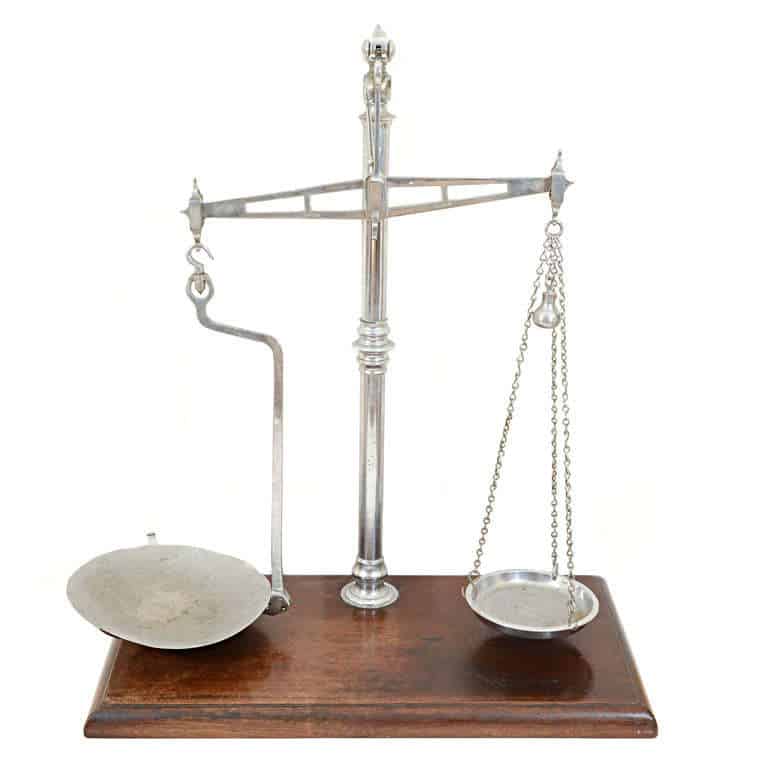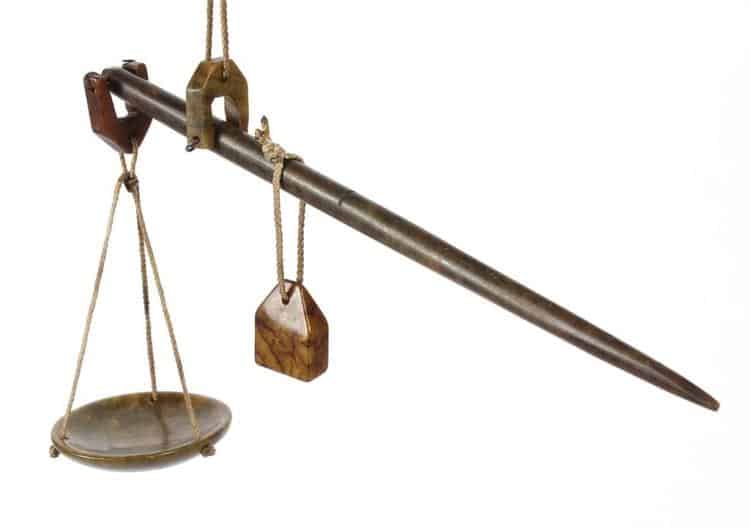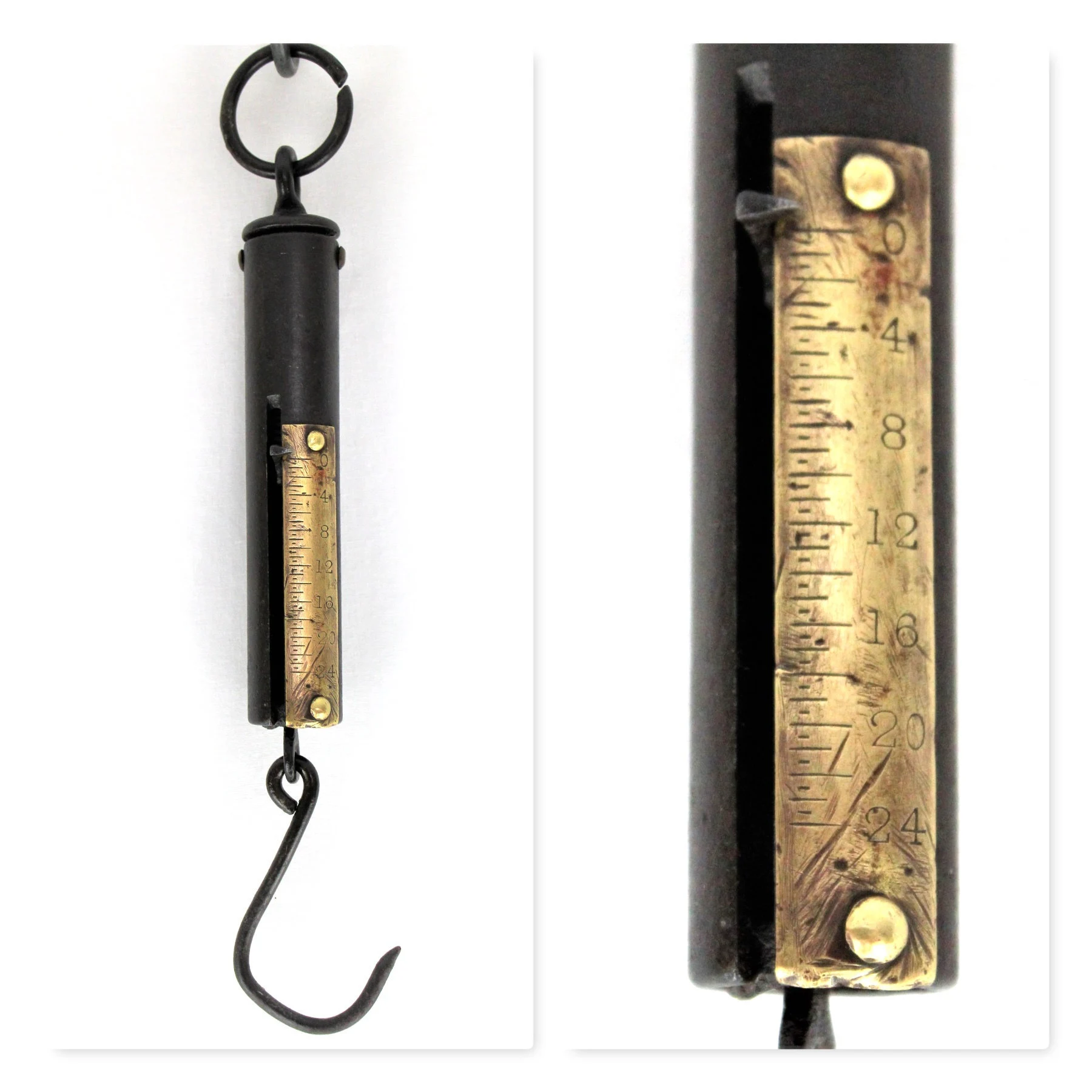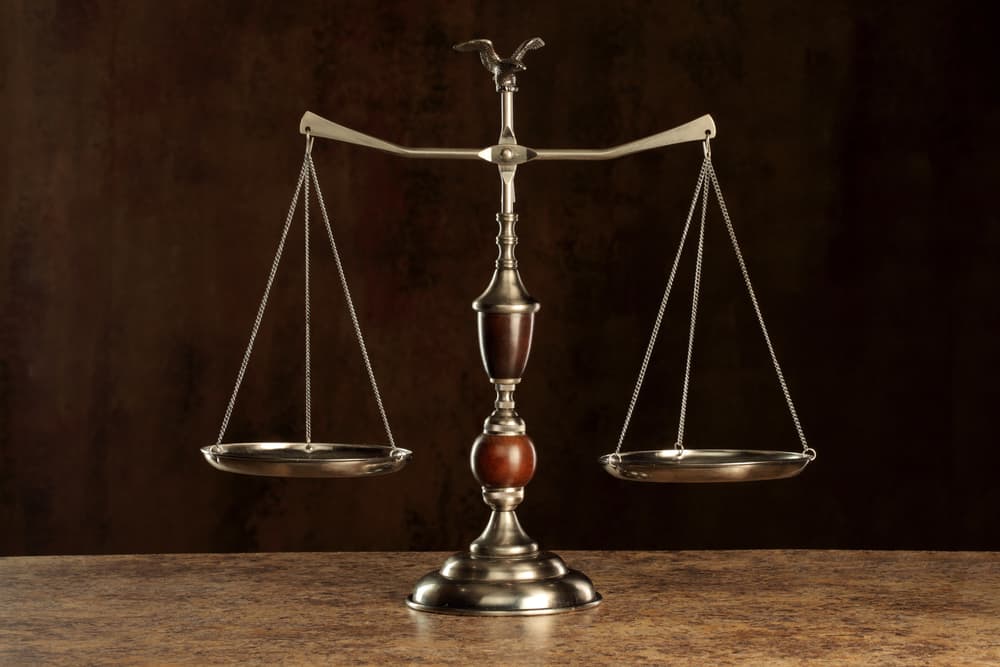Antique balance scales are some of the most striking antiques you can collect, and are hugely popular with collectors and interior designers alike.
With each passing day, they increase in value, as more people want to own an ornate scale.
Today, we’re going to show how valuable these scales can be. From their rich history to the different types and styles, to showing how easy it is to restore them – and much more!
Table of Contents
History of the balance scale
Ancient history
The earliest recorded balance4 scales date back to almost 2,000 years B.C, near present-day Pakistan. As trade grew and grew, merchants needed ways to measure the quality and quantity of goods while on the move. Balance scales became an integral part of this.
Early scales were simple but effective. Two scales sat on either side of a fixed beam. Weight stones were usually used on one end to compare goods.
At this time, balance scales were also significant spiritually, with examples of the Ancient Egyptians, in particular, using scales as part of their mythology and after-life stories.
Over time, it became apparent that weight stones needed to be improved, as many traders were purposefully using inaccurate stones to con trade. It wasn’t until the Romans devised metal weights that balance scales began using a standardized system.
The 17th century
It wasn’t until the Industrial Revolution that the balance scales received a much-needed upgrade. In 1770l, the spring scale was invented. Balance sales no longer required a counterweight to function. Instead, it measured the pressure an object put on the scale.
20th Century – Digital era
As early as the 1940s, analytical balance scales were being used in science to measure minute particles. But the first digital scales for home use weren’t patented until the 1980s. Digital scales replaced mechanical scales in all corners of life, pushing them more into works of art, antiques, and collectibles, than recording devices.
Types of antique balance scales
There are three main types of antique balance scales. Let’s take a quick look at each, and examples of how they worked in everyday life.
The Equal Arm Scale

The equal arm scale followed the classic ‘T-shape’ design, where each end had a platform. People could measure weight by putting goods on one side, and weighted stones on the other, and had unmatched precision when made well.
Examples of these scales in practical use include:
- Money Scales: vital to measuring sums of money quickly throughout history. These were small scales and used by traders.
- Postal scales: Many antique balance scales were used in the postal service to weigh letters and packages. Since the 19th century, postal workers worked out stamp prices and delivery charges using these scales.
- Medical scales: By the 18th century, doctors, chemists, pharmacists, and apothecaries needed precise scales to measure quantities of medicines and ointments. These scales had a central beam with smaller platforms. They were usually kept in a glass case to prevent dust from gathering on them.
The Unequal Arm Scale

Unequal scales, also known as bismar scales, had one end longer than the other.
Because one end of the scale had a permanent weight attached to it, it always had a standardized unit of measurement. This replaced olden weight stones which could vary in size and be tampered with.
Unequal arm scales were often cheaper and less accurate than other scales. Examples include:
- Pendulum Scales: These were small scales with a long arm that held the weight, and were often used by butchers and bakers because you could calculate weight in tandem with the price.
- Coin verification: By the early 1800s, new balances were developed to verify coins of gold. They also certified coin thickness and diameter.
- Textile scales: These scales measured two metrics – weight and square area. They were light, allowing busy merchants to carry them through markets to size materials on the go. And because they often had right angles in their design, they’re considered highly fashionable for interior design today.
Spring balance

A spring balance worked by attaching an object to a hook or suspension. The amount the spring extended or compressed was used to measure its weight. Spring balances were simple, cheap, and made weighing heavy objects straightforward. During the 1770s, many scales were adapted to incorporate this new mechanism. Examples include:
- Mancur Scales: With suspension rings, load hooks, and brass dials, Mancur scales were often used in butcher shops to measure the weight of large quantities of meat
- Egg Scales: These scales were useful for sorting eggs according to size and weight. It worked by suspending the egg on a spring strap. A dial would move to measure its weight. These scales are often very small and initially could only weigh one egg per time.
- Kitchen scales: Kitchen spring scales were able to measure small quantities of goods quickly. They were cheap, mass-produced, and often had decorations, making them highly collectible, and popular until the dawn of digital scales.
How to identify an antique balance scale?
Balance scales are often easy to identify because of how distinctive they look and work. Step by step, let’s take a quick look at ways to identify your balance scales:
Design
Balance scales changed regularly throughout history. From primitive-looking balance scales to precise pendulum scales, and everything in between.
Examine features of the scale to determine how it worked – equal measure scales are generally the oldest kind of scale, followed closely by unequal, and then spring scales.
Material
Craftsmen throughout history often used locally sourced materials available at the time. For example, wooden scales are generally the oldest material. Brass points to the early 17th century onwards.
Silver only became affordable and thus popular from the mid-1800s onwards. Plastic scales are modern, usually from the 1940s onwards.
Reference books
Scales: A Collector’s Guide by Bill Berning comes highly recommended and features hundreds of colored photographs and manufacturers.
You can also subscribe to the International Society of Antique Scale Collectors. They post quarterly journals and host silent auctions and organize regional meetings.
How much is an antique weighing scale worth?
Materials
Cast iron scales are usually the least valuable balance scales on the market, with many only worth a couple of dollars at best. Examples include:
- 1892 fishing balance scale worth $5
- 3 cast iron scale weights worth $25
- Cast iron kitchen balance scale worth $60
Brass scales are worth slightly more than iron because they are more durable, look better, and often had more details and intricate shapes. Examples include:
- This antique brass spring scale is worth $12
- This brass equal balance with wheelbase is worth $19
- This Italian brass balance scale is worth $416
Silver is probably the most reliable material and will always fetch a high price at auction because of its durability and design. Examples include:
This Grams silver weight scale is worth $700
Unusual materials, such as glass, aluminum, and porcelain, can transform otherwise generic scales into valuable collector items These materials are uncommon because of how fragile they are, so scales should only be sold in pristine condition. Examples include:
- This balance scale with a porcelain top is worth $111
- This Apocetcary aluminum balance weight is worth $2,547
- This handblown glass balance scale is worth $6,621
Type
Equal scales are more common in the marketplace. And as we know, anything common is often less valuable in the eyes of collectors. Typical balance weights will go for around $120.
That said, if the scales are in great condition, are big, or are made of valuable materials, they can still sell for a small fortune at auction. This kitchen balance, for example, is simple in design but has an ebonized hardwood and mahogany inlay, increasing its value to $1,523.
Unequal balance scales are often worth more because they have a more ornate appearance popular in interior design. Examples include:
- This Chicago seed reporting scale with rulers is worth $750
- This Tuscan unequal balance scale with marketplace decorations is worth $959
- This Italian unequal balance scale with candle holder is worth $2,990
Spring-mechanism scales are generally not as valuable, often going for a couple of hundred dollars. It’s also common for spring mechanisms to be added to older scales during restorations, which might further devalue them as antiques.
Accessories
Balance scales that come with their original accessories, including trays, pans, rulers, dials, and dishes, will fetch more interest from antique collectors, than if they are missing parts.
Condition
Antique balance scales are often sold in excellent condition.
Any screws should be secured and there should be no obvious damage, scratches, or discoloration.
A light polish can help improve your scale’s appearance without robbing it of its antique appearance.
Market values
There are three websites we highly recommend you visit to get current market values. They are:
eBay is the largest antique auction site worldwide and has a thriving scale collecting community. Prices range from cheap, hanging balance beams worth $14 to one-of-a-kind weight scales worth $24,999.
1stDibs specializes in high-quality auctions. Sellers provide lots of detailed information on the scales.
Collector’s Weekly has a plethora of useful information and pools together many balance auctions from around the Internet in one useful, concise place.
How to restore an antique balance scale?
Restoring balance scales requires some degree of engineering to ensure your balance works properly. Etsy has several examples of restored balance scales to show you the level of quality expected.
Some of the most common include:
- Detaching parts carefully with special equipment and smooth edges
- Replacing screws, nuts, bolts, and fasteners
- Scrubbing bases with a hard-wire brush
- Soaking parts in a chemical solution for some time
- Repainting with specialized metallic paint

flipers are fun. Just Like Your Mom